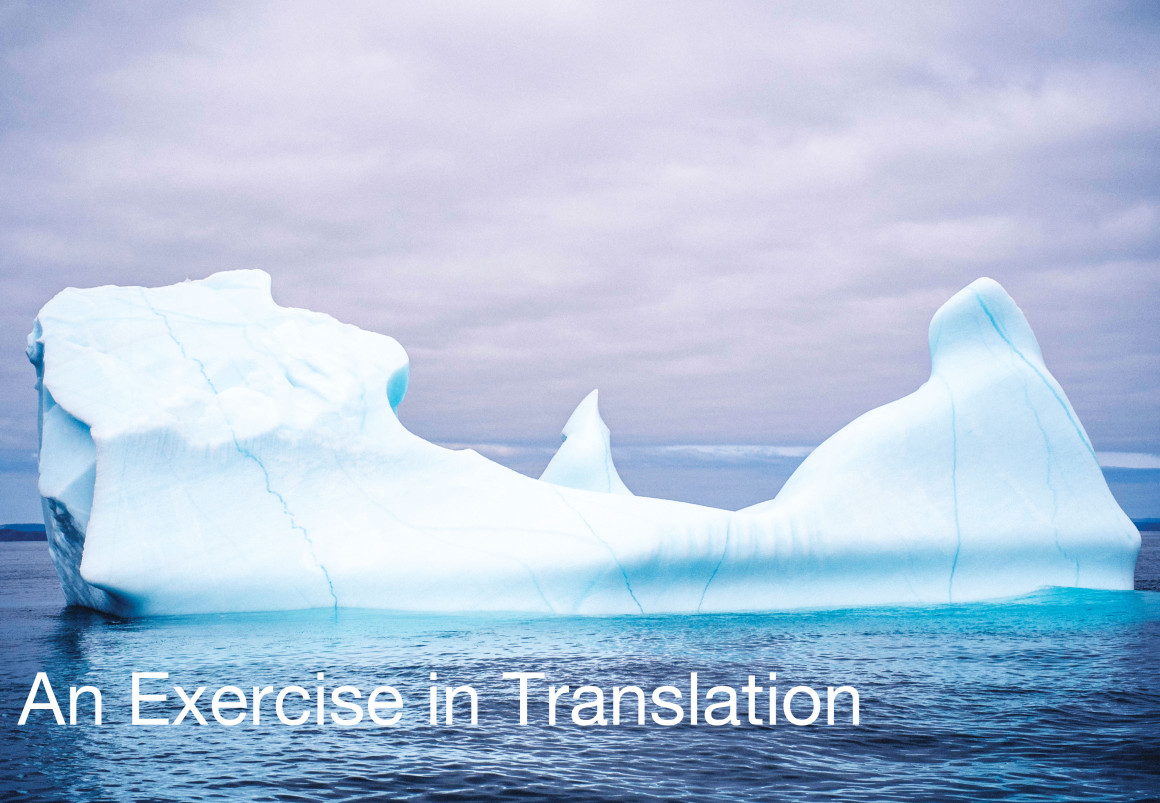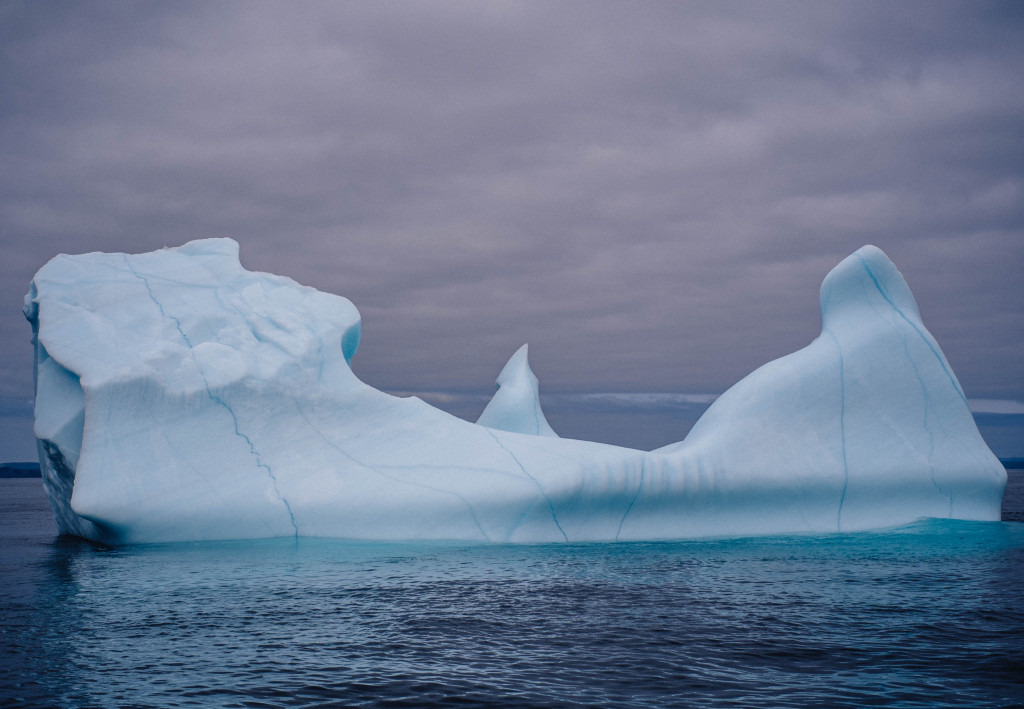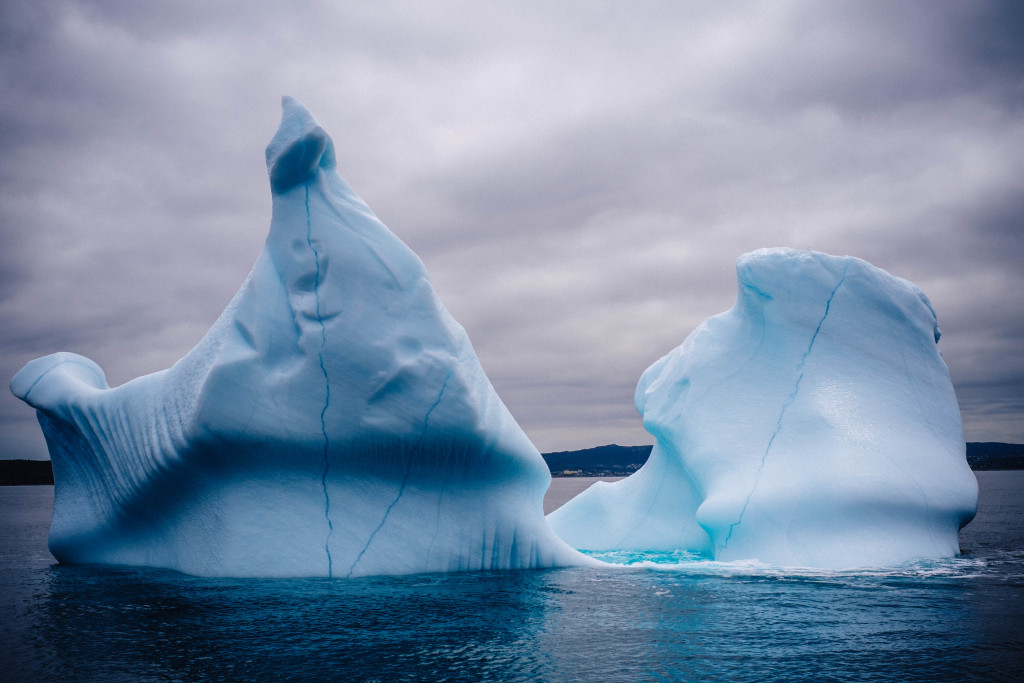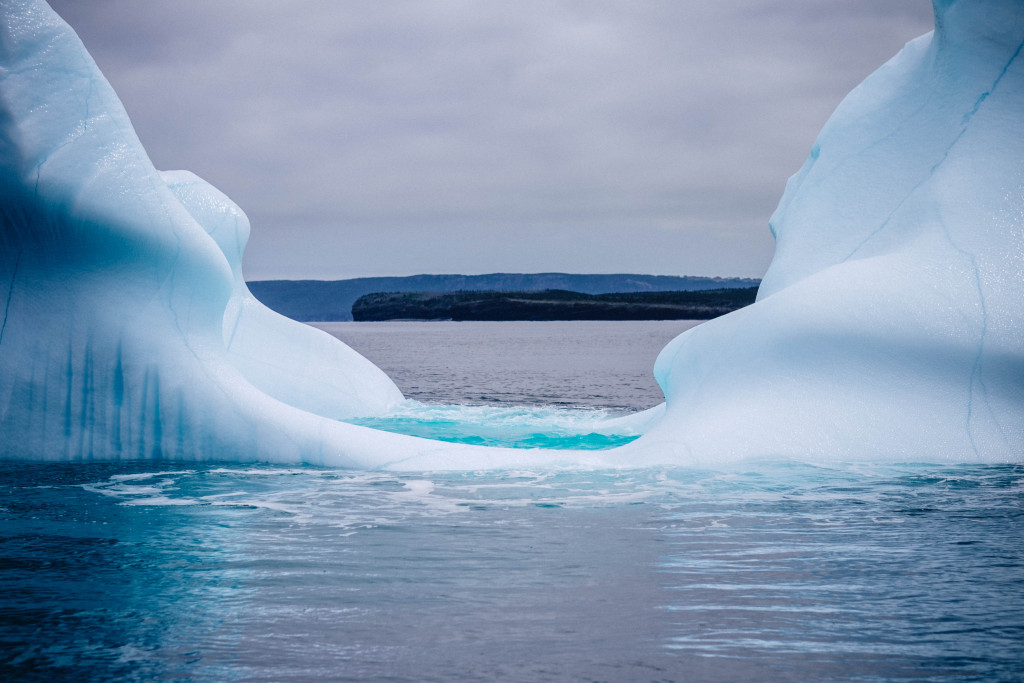
How to Teach Climate Change to Undergrads
By Chris Adams, July 30 2015 —
[dropcap style=”normal”]W[/dropcap]hat do you count as the most practical post-secondary degree you can get? Finance? Engineering? Something in the sciences? Prevailing wisdom suggests the most valuable degrees get you a job, preferably immediately after graduation.
If you just finished the program at Vermillion’s firefighting school, you’ve got this summer’s hottest ticket to employment.
There have been 5,603 forest fires in Canada so far this year. That’s about 1,500 more than the ten-year average.
Since a warming climate causes more forest fires, more burnt ash will wind up as soot deposited in glacial ice in places like Greenland and Antarctica. This creates what’s called black ice, which absorbs more energy than ice without soot deposits, making it melt faster.
Additional soot deposits will speed up the shrinking of glacial ice. If Greenland’s ice sheet melts – — which scientists say looks increasingly likely — the sea level will rise over six metres. Populations in the world’s coastal cities will find their streets and their malls and their subway systems flooded.
I reached Dave Pederson, the executive director of the Pacific Institute for Climate Solutions (PICS), as Western Canada was on fire.
“It’s a tough summer, for sure. We had air quality advisories [in Victoria] for almost the first time in our history. The air is quite clear now, but it was very weird.”
Vancouver was smoggier than the notoriously polluted Hong Kong for the first time. Smoke from Saskatchewan crossed the prairies and headed south toward Colorado. Calgary’s skyline hued with red and orange outside my window.
Sadly, my degree in political science won’t give me license to hang out of a biplane and dump buckets of water on burning hectares of forest. Few of us are equipped to deal with the threat climate change poses in the very near future. And few courses, let alone degrees, at Canadian universities directly prepare students to adapt to a world forever altered by climate change. That’s a problem. Canadian universities need to develop more courses that offer a solid, interdisciplinary foundation on climate change because all of us — scientists or otherwise — will have to deal with its effects.
Getting a holistic look at climate change at the undergraduate level is difficult because most courses only hint at narrow aspects of it. This rings true at the U of C. According to its website, the University of Calgary has over 350 courses that cover topics related to sustainability. Courses must meet one or more of the three criteria for sustainability to get the distinction. Those criteria include social, economic and environmental components — the last of which lists climate change adaptation as a qualifier.
Courses are then split into two camps: those that are sustainability-focused and those that are sustainability-related. But there’s no clear way to tell which are which. Those classified as “sustainable” under the U of C’s guidelines cross nearly every faculty — from philosophy to indigenous studies to veterinary medicine.
U of C political science professor Sarah Jordaan teaches a selected topics course in Canada-U.S. energy policy and a special topics graduate course on environmental policy analysis. She spitballed how much of her course on energy policy actually deals with climate change.
“About 50 per cent,” she said.
Climate change is too pervasive not to study anymore and it’s great that so many courses cover sustainability. But when the university says sustainability, they don’t necessarily mean climate change.
Touching on a topic isn’t the same as comprehensively covering it. An arts student trying to fill a science requirement can’t take the U of C’s only dedicated class on climate change, a 500-level geography course taught by glaciologist Shawn Marshall.
Of course, education is foundational and a fourth-year political science student without any geography prerequisites has no business in a 500-level GEOG class. I got stuck taking GLGY 209, Introduction to Geology. The instructor did a great job of making me care about felsic rock and I learned a lot about cinnabar, the most toxic mineral in the world. By acknowledging that she was teaching a science class catered to arts students, the instructor made the class interesting by talking about the subject in a language we could understand.
But from the perspective of a political science student, I didn’t understand why that logic was applied to a class colloquially known as ‘Rocks for Jocks’ instead of one that gives students a primer on the science behind climate change. There has to be a better way to structure mandatory breadth requirements. These classes should broaden the scope of our arts degrees in practical ways. Instead, we’re stuck memorizing the phases of the moon.
Deborah Harford, executive director of Simon Fraser University’s Adaptation to Climate Change Team (ACT), agrees.
“I think we should have a foundational undergraduate course on climate change that is mandatory for all students, both on ethics but also on the demonstrable, measurable impacts that humans are now having on the environment,” she said.
Introducing new mandatory courses isn’t unusual at Canadian universities. The University of Winnipeg requires all its students take a course on aboriginal relations. The aboriginal population in Manitoba was 17 per cent and rising in 2011. Degree requirements for arts students at the University of British Columbia demand they take a full-course in a language other than English whether or not they’re in an honours program.
You can argue for the necessity of any degree requirement, and climate change presents a compelling case.
[hr gap=”40″]
[dropcap style=”normal”]H[/dropcap]umanity’s impact on the environment has been massive — and measurable — in the last 150 years. The global concentration of atmospheric carbon dioxide averaged 400 parts per million (PPM) in March 2015, 50 million PPM higher than what’s considered safe. CO2 concentration hasn’t been that high in 3.3 million years, when the temperature was between two and three degrees celsius higher than the pre-industrial average.
And the way we’ve altered the environment affects more than just temperature. Scientists recently concluded that humanity is the cause of a sixth mass extinction of Earth’s species due to factors like air pollution, habitat destruction and industrial activity. The last mass extinction happened 65-million years ago, when a meteor impact wiped out non-avian dinosaurs.
“The fact [is] that every single person on the planet faces major climate changes whether or not we reduce our emissions to zero today,” Harford said. “We’ve got what we call the commitment to climate change — it doesn’t matter what we do now. We will see warming through 2050.”
That’s compelling enough for me.
[hr gap=”40″]
[dropcap style=”normal”]A[/dropcap]CT is the only research consortium in Canada that focuses on adaptation to a changing climate by identifying gaps in government policy. By connecting graduate students, professors and researchers at Simon Fraser University with First Nations leaders, industry and government agencies, they work to translate scientific research and specialized knowledge into language that policymakers can understand.
Pederson’s PICS — a research consortium connecting British Columbia’s four research-intensive universities — is much the same. Their focus is on solutions for the B.C government. Neither PICS nor ACT directly crafts curriculum at the universities they’re housed in, but academics researching at these institutes do teach courses on climate.
“We’re trying to hear all of the different voices and all of the different languages they’re speaking; trying to understand what languages make the most sense for which messages, when and for which groups,” Harford said. “It’s very much a kind of translation exercise.”
U of C geography professor Gwendolyn Blue researches how we discuss solutions to the problems posed by climate change. She also teaches a course in the natural sciences program called Science in Society. Her course focuses on scientific controversies — things like vaccination and water fluoridation — and how society debates them.
It’s a required course for natural science students. The premise is that in order to get a sense of scientific literacy, you need to understand how science functions in a broader social context. She often uses climate change as a way of thinking through the challenges associated with science’s role in contemporary society.
“The rationale for it is that science students need other elements of scientific literacy. Not just understanding the scientific concepts, but how science is used in a social setting,” Blue said.
Reverse the equation, and you’ve got a sound justification for a foundational course in climate change for arts students. And these courses do exist, just not that broadly.
McGill University offers multiple upper-level geography courses on climate change. One is called Human Dimensions of Climate Change. Another is titled Climate Change Vulnerability and Adaptation. They also have a senior economics course called Economics of Climate Change. The University of Toronto’s school of environment offers a course called Assessing Global Change: Science and the Environment. There’s also a 200-level earth sciences course at the U of T called Confronting Global Change that teaches how humanity has impacted the planet through environmental degradation and climate change.
Those are the top two schools in Canada according to Maclean’s University Rankings. As you work your way down Maclean’s list, fewer and fewer schools offer courses on climate as comprehensively as McGill or U of T. Few of these are interdisciplinary and none of them are mandatory. When you reach the U of C — 12th in the rankings — there’s only one dedicated course on climate change, and that’s a geography course with a handful of prerequisites.
At the graduate level, Daniel Scott oversees the University of Waterloo’s Masters in climate change program, the only graduate program dedicated to its study. Over email, he said that Canadian universities don’t adequately prepare their students for “one of the major issues this century,” noting that many don’t have dedicated climate change courses at the undergraduate level.
I asked Pederson to give me an example of a university that’s doing a bad job of teaching undergads about climate change. In my head, the school that teaches least, teaches worst. But he said there’s a traditional approach to undergraduate education that doesn’t always lend itself well to a course on something as complex as climate change.
“At that level, the traditional model is to supply courses that contribute to a specific degree,” Pederson said. “There’s nothing really wrong with the traditional model.”
But this model doesn’t work well for interdisciplinary coursework. Climate change courses need to use an interdisciplinary framework to make both the scientific and social aspects palatable to students across disciplines. A good foundational climate change course won’t be for fourth year geology students, so the science should be translated into a dialect social scientists can understand.
That’s not the traditional approach. But climate change requires non-traditional solutions.
“We’re going to see consequences and we’re going to need every single engineer, urban planner, architect, policy-maker, social and natural scientist aware of what these changes mean,” Harford said. “You could teach that in a course that would be relevant to both natural and social sciences.”
[hr gap=”40″]
[dropcap style=”normal”]B[/dropcap]ut the problem is deeper than a lack of coursework. The University of Victoria offers an interdisciplinary minor on the human dimensions of climate change. But Pederson said students aren’t as attracted to it as he expected they’d be. Even at the University of Waterloo, which has a dedicated undergraduate course on climate change and a masters program committed to its study, Scott said only around one or two per cent of students graduate having taken a course on climate change.
UVic also offers a course called Climate and Society. It’s not mandatory, but it’s a popular third-year interdisciplinary course on how climate change will impact society.
Pederson, who taught the course at UVic in 2014, said there’s a lot of room for improvement at Canadian universities in terms of how they teach climate change. But interdisciplinary courses like these, he said, are among the hardest to teach. There are problems with the language.
“The instructors are walking a fine line by trying to keep it interesting for those students who come into it with a science background and those students who come into it with an English literature background and everything in-between,” Pederson said.
In his suite of lectures, Pederson used the price of food as a focal point his students could intellectually rally around. He asked ‘how many of you pay for groceries?’ Hands shot up. He asked ‘how many of you noticed your grocery bill has risen dramatically in the last few years?’ Heads nodded.
Then he asked why.
The answer is complicated — a combination of decreased crop yields and the rising cost of food transportation. People get nervous when prices go up and they want to know why they’re paying more. Pederson’s students were hooked. He used a practical example as a vehicle to ease his students into the physics of climate change at a level they could understand without getting bogged down by scientific language.
“Translate equations into words,” he said, “and they get it.”
[hr gap=”40″]
[dropcap style=”normal”]A[/dropcap]long with giving lectures on the environment to masters of social work students, professor Mishka Lysack hosts a series of conferences at the U of C about climate change. Some look at the limitations of traditional energy (coal, oil and gas, etc), the health impacts of unconventional gas extraction (fracking) or the feasibility of implementing renewable energy and job creation in a green economy.
He said they draw relatively large audiences by bringing in speakers from different disciplines to give their take on certain aspects of climate change. Lysack brought in a medical doctor, veterinarian, engineering professor and an environmental policy expert to discuss how natural gas impacts health and the climate at his last conference in January. He said he looks for common themes among researchers from different fields before inviting them to speak. The diversity of his panels reflects the interdisciplinary approach that’s necessary to tackling climate change.
Lysack’s conference series is essentially a template for how a foundational climate change course should look. It shouldn’t focus on any one aspect. Instead, the course would give students from any discipline the necessary primer to inform their lives in a world increasingly affected by climate change.
Each field has key findings to contribute, but everyone needs to be able to understand them. The best speakers he brings in are able to translate the language they use to audiences outside their disciplines. They see it as a part of their responsibility as good educators.
“There seems to be certain people who, by temperament, ethic, interest and skill, seem to be inclined to be able to talk across interdisciplinary boundaries in ways that makes it accessible for people who are not medical students,” Lysack said.
But that isn’t always easy, and incentivizing professors to teach these courses is sometimes just as problematic as finding one with a finesse for translation. Especially if universities don’t always encourage interdisciplinary cooperation.
“When I comment about interdisciplinary research needs within universities to some of the faculty that I know, they say ‘good luck, that’s not going to happen,” Harford said.
“The way that tenure is set up, academics don’t get any credit for interdisciplinary work,” Harford said. “They only get credit for work they can claim authorship on.”
The U of C’s approach to interdisciplinary programs also deters faculty from construct inter-departmental courses. Administration decentralized the undergraduate interdisciplinary office last year, meaning there’s no central housing authority for professors to propose and seek help when building interdisciplinary courses. Professors are essentially on their own.
We’ve lost the ability to formally make interdisciplinary linkages at the U of C. And there is demand for that kind of course at the faculty level. Blue said she and fellow geography professor Shawn Marshall have talked about building a foundational course on climate change. In her view, it would bring people together from different different specializations. It wouldn’t “reproduce divisions, but give the relevant science that you need to know and the relevant politics that you need to be a good citizen.”
And there are other disincentives that dissuade professors from building interdisciplinary courses. Blue said there isn’t a way to experiment with teaching new courses. If a course fails, it often “puts a nail in a coffin.” That’s counterintuitive. Experimentation isn’t about success. Failure is often built into an experiment and professors need space to test new courses without fear they’ll harm their careers in the process.
[hr gap=”40″]
[dropcap style=”normal”]P[/dropcap]eople say education is a lifelong pursuit, and most of us can wait until fourth year to specialize. But the climate isn’t changing slowly; it’s altering every facet of the planet at a rate that has far outpaced most climate models. We’re going to see warming through 2050, even if we cut emissions to zero today. We’re married to it now, and we need to adapt — fast.
And it isn’t just about saving polar bears and rainforest frogs. A study published in March by the National Academy of Sciences claimed the effects of climate change had a hand in sparking Syria’s ongoing civil war. Severe drought pushed millions of people off their farms and into Syrian cities, where a corrupt government and a high unemployment rate were already weighing heavily on the bureaucratic system.
Climate change didn’t cause Syria’s civil war on its own, but it had a heavy hand to play in straining the social system just enough to push them in that direction. After four years, millions have fled the country, hundreds of thousands have died and a terrorist organization more radical than al-Qaeda has taken control of large swathes of Syria’s territory.
A foundational, interdisciplinary undergraduate course won’t instantly end the migration of climate refugees, stop species destruction or douse any forest fires, but it’ll give students the basis to decide how to adapt to a changed climate when they find themselves in positions of power.
Universities need to let students know what they’re up against so we’ll have the capacity to mitigate and adapt to the effects of climate change. We’re good at this sort of thing — when we’re given the tools to do it well.


